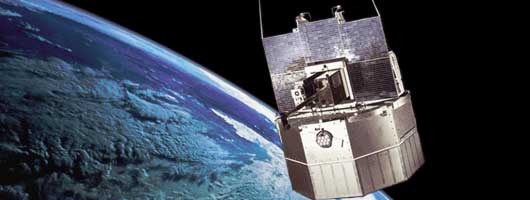OSO-7
Orbiting Solar Observatory-7

Solar X-ray Experiment
Soft X-ray Detector | Hard X-ray Detector | Particle Detectors | Electronics | Performance
Three solid state particle monitors were located on the UCSD Solar X-ray Experiment. Each solid state detector had its thickness and cover material selected in such a way as to give a differential proton channel and an integral electron channel. Although the highest energy detector failed two weeks after launch, the others provided useful information on particle fluxes in orbit.
The solid state particle counters were were sensitive to electrons in the range 0.1 to 75 MeV and to protons in the range 2.6 to 54 MeV.
| Detector | Solid State Detector 1 | Solid State Detector 2 | Solid State Detector 3 |
|---|---|---|---|
| Effective Area | 5 mm2 | 25 mm2 | 100 mm2 |
| Thickness | 0.3 mm | 0.3 mm | 0.5 mm |
| Solid Angle | 0.51 sr (90 x 20 degrees) | 6.28 sr (half sky) | 6.28 (half sky) |
| Absorber | 7.3 mg/cm2 Aluminum | 134 mg/cm2 Aluminum | 2.45 g/cm2 Aluminum |
| Energy Range | electrons > 100 keV2.6 MeV < protons < 13.5 MeV | electrons > 500 MeV9 MeV < protons < 21.5 MeV | electrons > 5 MeV46 MeV < protons < 54 MeV |
OSO-7 Information
Mission Objectives
Spacecraft
Cosmic X--ray Experiment
Solar X--ray Experiment
Results
Publication